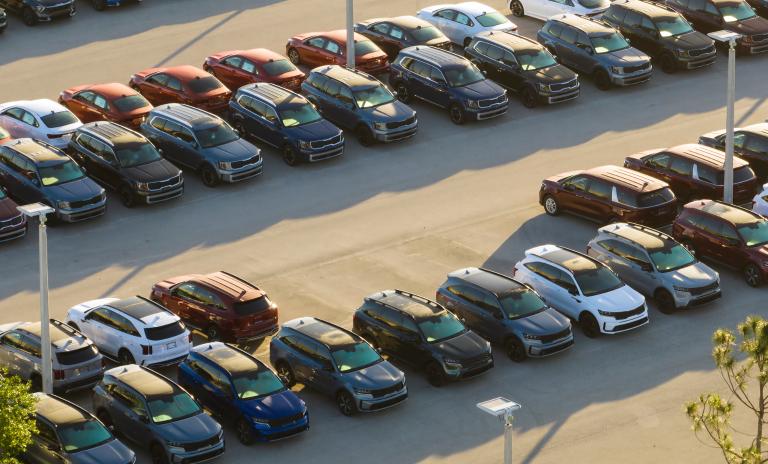

The tariff effect: How trade policy is reshaping automotive retail
The U.S. automotive retail landscape is entering a period of pronounced uncertainty. Tariffs and trade restrictions — once considered temporary political levers — are now evolving into structural features of the policy environment. For dealers, this means more than just short-term pricing adjustments; it signals a fundamental shift in how vehicles are sourced, priced, sold and repaired.
In partnership with the Dave Cantin Group, we recently hosted a roundtable discussion with dealership executives to examine the implications of these developments. This article outlines several key takeaways from that conversation and our broader work in the sector.

Tariffs are creating uneven pressure across the value chain
While headlines often focus on finished vehicle imports, the more persistent challenge may be the cumulative cost increases across parts, components, and raw materials. Tariffs on EV batteries, electronics, and steel — many of which originate in countries subject to heightened scrutiny — are raising wholesale costs in ways that are difficult to pass through to consumers.
Dealerships are already feeling the effects:
- Parts margins are compressing as OEM prices rise and consumers shift to lower-cost aftermarket options
- New vehicle affordability is declining, pushing more buyers toward more affordable options, used vehicles or out of the market entirely
- Inventory planning is more complex, as cost fluctuations alter demand patterns with limited warning
The consumer affordability challenge is escalating
April 2025 marked the fourth consecutive monthly decline in U.S. consumer sentiment, with an 11% drop from March. Dealers report growing price sensitivity, particularly in the sub-$40,000 segment, where even modest increases can deter purchases. This shift is a function of tariffs, sustained inflation, and high interest rates.
What’s emerging is a more cautious consumer—one who prioritizes cost predictability and functional value over premium features or brand loyalty. Dealers will need to adjust their inventory strategy and messaging to reflect this reality - particularly in the volume segment.
Service and parts: A shifting competitive landscape
The fixed-ops business — long a stable profit center — is now exposed to cost and loyalty risks. Roland Berger research shows that more than half of vehicle owners rely on independent repair shops, with only 42% preferring OEM parts when alternatives exist. Rising prices will likely accelerate this migration, especially in the out-of-warranty segment.
This presents an operational question for dealerships: Should they continue prioritizing OEM exclusivity, or adopt a more flexible sourcing model to maintain service retention?
OEM strategies are no longer converging
Manufacturers are not responding to these market dynamics uniformly. Some are using the window of opportunity to strategically reposition the brand; North American OEMs emphasize “MADE in the USA” as a differentiating factor; European OEMs are re-considering go2 market strategies. Consumers are re-evaluating their brand loyalty, as their brand-perception is impacted by these strategic changes and economic volatility.
Dealers must reassess their alignment with OEM partners regarding profitability today and strategic fit to the demographics of their local customer segments and the positioning of the dealer (group) over the next five to ten years.
A framework for navigating the shift
To manage both the near-term volatility and the longer-term transformation of the automotive retail, we recommend dealers focus on the following:
1. Quantify exposure to tariffs across inventory, service, and parts revenue streams.
2. Adapt pricing and communication strategies to emphasize total cost of ownership and value-based messaging.
3. Expand parts sourcing flexibility where feasible.
4. Engage OEMs proactively to understand their evolving sourcing and retail strategies and leverage OEM marketing efforts and market intelligence.
5. Revisit brand portfolio decisions with an eye on long-term alignment.
At Roland Berger, we work with automotive stakeholders across the value chain to navigate these complexities, combining data-led analysis with deep industry context.




_person_320.png)